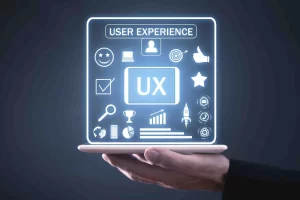Uses of Sustainable Materials in Art

From a thematic perspective, art and sustainability have a long history. The relationship between painting and sustainability, in the environmental sense, intensified as it became a constant in pictorial art. The arrival of Baroque, Romanticism, Impressionism, then Post-impressionism and later movements, saw a vivid interest develop in the use of natural resources. With record-breaking heatwaves, devastating floods and forest fires, and the loss of 15 animal species, the world is beginning to understand the terrible reality of climate change. Although artists have always urged us to pay attention to the world around us, their message has never been so clear. Sustainable art is a wide practise that includes anything from collaborating with the natural environment to showing the ways in which we might use renewable energy sources.
We’ve reached a point where awareness alone won’t be enough to stop climate change; it’s time to learn and act. Sustainable art, with its various subgenres, approaches, and messages, is a step in the right direction. Oceans are rising, fires are raging, and people are being forced to evacuate their homes out of fear of natural disaster.
Though a general phrase, Conceptual Art in the context of sustainability emphasises the reasons behind the development of a specific piece of art. Key environmental or societal concerns will be brought to light by artists via provocative works in every form they may imagine, from sculpture and installation to fashion and photography. On the surface, these displays can appear strangely lovely, but their purpose is to get us to think about how our activities affect the environment.
The concept of sustainability permeates many facets of daily living. In several areas, we make careful to protect the environment, pursue balanced economic growth, and promote social well-being. One of them is the use of art as a means of expression, a medium, or a critique in support of sustainable development. Do you want to understand how art and sustainability coexist?
The artistic world continued to create sustainable art when the new century arrived, recognising its effects on the social and environmental spheres. Sustainable artists currently aim to maximise the use of natural resources to lessen the environmental impact of their work, similar to sustainable building. However, the connection between art and sustainability is not just restricted to tangible media, such as paintings made using environmentally friendly materials or sculptures constructed of natural materials. It transcends what is obvious from the art alone.
Use Eco-Friendly Art Materials: Why?
If you’ve ever attended an art class, you are aware of the wide variety of tools and equipment needed to create a work of art. There are countless options for what you can make, from paint to clay to canvas. Have you ever given any thought to the origin of those materials or their environmental effects? The same applies to art materials. Using art materials that emit less carbon emissions than conventional materials, we shall explore strategies for reaching a carbon-sustainable condition in this article. In the same spirit, we’ll search for traits with less artificial components and lower toxicity.
What are the benefits of using eco art supplies?
Many artists are now turning to eco art supplies to be more sustainable and earth-friendly. Here are 5 benefits of using eco-friendly art supplies: they’re better for the environment, they’re non-toxic, they’re biodegradable, they’re affordable, they’re stylish!!
This article cannot fully address the sustainability and environmental effects of all sorts of art materials. To prevent unintentionally affecting the environment, it is crucial that both professional and amateur artists assess the materials they use to make their work, from how they are made to where they end up. It is encouraging to see how many businesses are taking artists’ and environmentalists’ concerns into account and developing more ecologically friendly goods and procedures.
You have a unique chance to protect the environment as an artist. The decisions you make about the materials you employ might have a big influence on the condition of our world. Thanks to the increasing availability of eco-friendly art supplies, you may produce stunning works of art without endangering the earth. These supplies can be equally as effective as conventional ones and are frequently manufactured from sustainable resources. Look for goods that are manufactured from recycled materials, renewable resources, or biodegradable components when selecting environmentally friendly art supplies. The range of environmentally friendly goods on the market will astound you, and you’ll feel good knowing that your artwork contributes to the preservation of the environment!
Similar Articles
-

Breaking Down the 7 Core UX Design Principles 04-07-2025
Ever wondered why certain apps or websites feel intuitive and effortle
-

Understanding the Different Types of Graphic Design 04-07-2025
Have you ever stopped to think about how much of the world around you
-

Mastering 2D and 3D Animation 03-04-2025
The Ultimate Career Boost in Today’s Creative Industry The demand fo
-

How to Make a Graphic Design Portfolio? 02-27-2025
Imagine walking into a room full of potential clients or employers, bu
